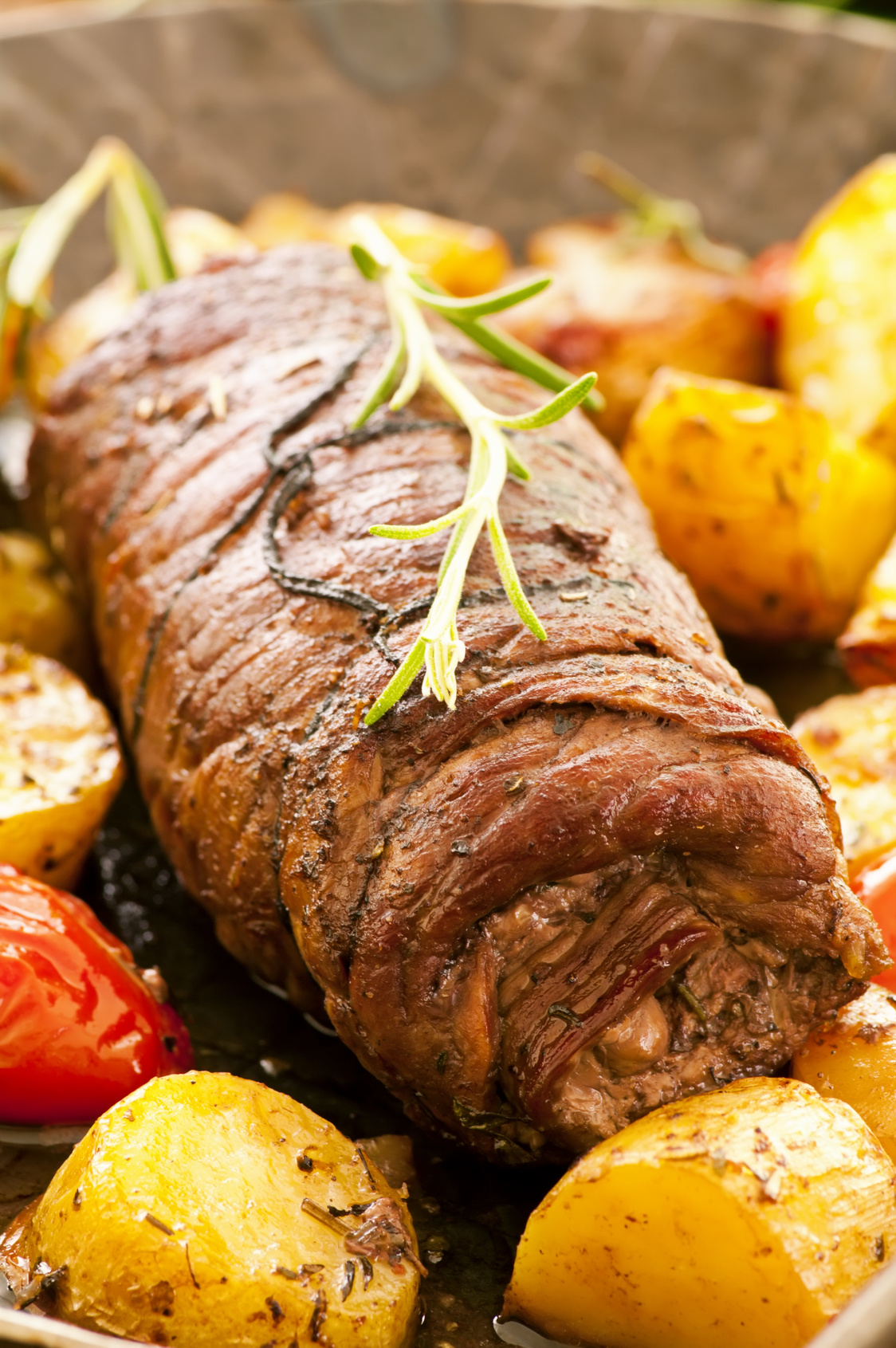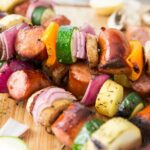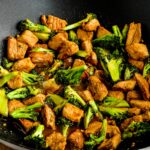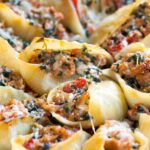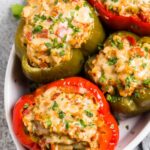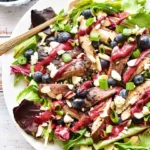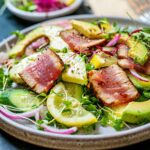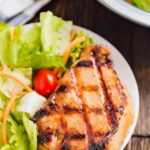German cuisine is rich and diverse, offering a variety of dishes that are both flavorful and comforting. From savory sausages to delicious baked goods, German food brings warmth and tradition to your table.
If you’re looking to explore new tastes or revisit old favorites, you’ll find plenty to love in these classic recipes. These dishes not only highlight the best of German culinary traditions but also provide something for everyone to enjoy, no matter your cooking skill level.
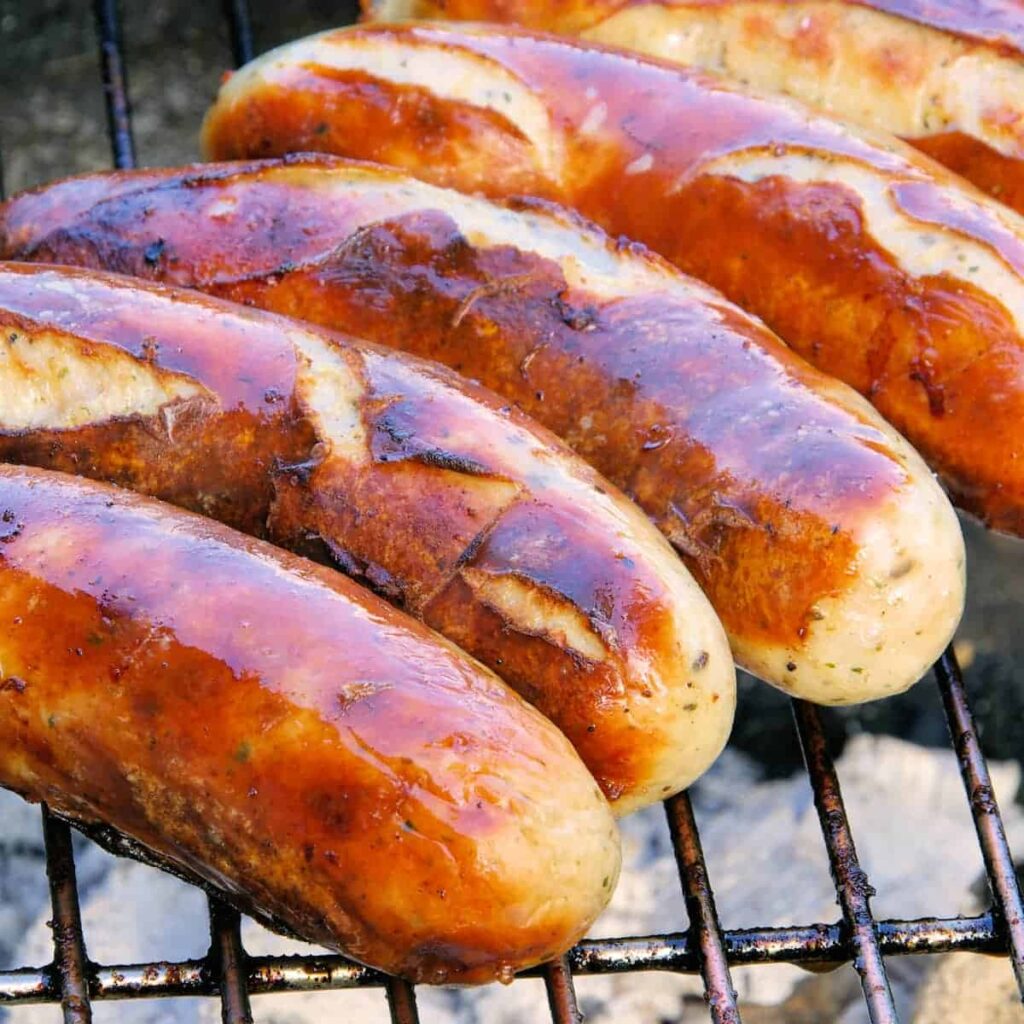
1) Bratwurst
Bratwurst is a popular German sausage, known for its savory flavor and variety of regional recipes. Traditionally made with pork, veal, or beef, the meat is ground and mixed with spices like marjoram, nutmeg, and caraway.
The preparation of bratwurst can vary. For example, in Nuremberg, marjoram is a key spice. Other regions might prefer different seasonings. No matter the variation, fresh bratwurst is typically cooked by grilling, roasting, or pan-frying.
To make bratwurst at home, you need a meat grinder and some common spices. Mix ground pork, fat, and crushed ice to keep the meat cold. Add your desired spices, and grind the mixture again for a finer texture. Shape the mixture into sausages and they’re ready to cook.
Pairing bratwurst with German potato salad or a cold beer is always a good choice. These sausages are a hit at barbecues and family gatherings. With simple ingredients and straightforward preparation, you can enjoy authentic German flavors at home.
You can also try cooking bratwurst using different methods. For instance, air-frying can offer a quick and healthy option. No matter how you cook them, bratwurst is versatile and delicious.
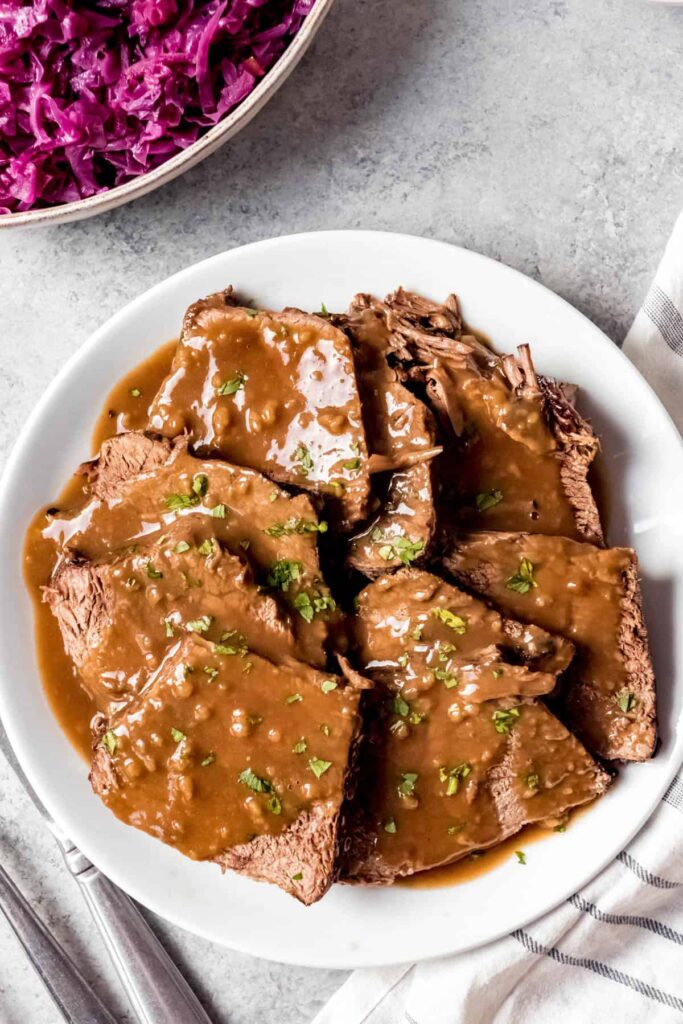
2) Sauerbraten
Sauerbraten is a traditional German pot roast. Usually made with beef, it is marinated in a mixture of vinegar, water, onions, and spices. This process tenderizes the meat and gives it a distinct sour flavor.
To cook Sauerbraten, you first brown the marinated beef on all sides. Use a heavy pot or Dutch oven with some oil or bacon fat. This step ensures a rich, flavorful crust.
After browning the beef, add the marinade and bring it to a simmer. Cover and cook the beef on medium-low heat for about 2 to 2.5 hours until it becomes tender.
Once cooked, remove the beef and let it rest. Strain the cooking liquid, keeping only the liquid and discarding the solids. This strained liquid becomes the base for the gravy.
To make the gravy, melt some butter in a pan and whisk in flour until browned. Slowly add the strained liquid, stirring constantly to avoid lumps. Season with salt and pepper to taste.
Slice the rested beef and serve it with the gravy. Sauerbraten is often paired with red cabbage and potato dumplings, making it a hearty and flavorful meal.
Enjoy your Sauerbraten with a glass of German beer or a hearty red wine for an authentic experience.
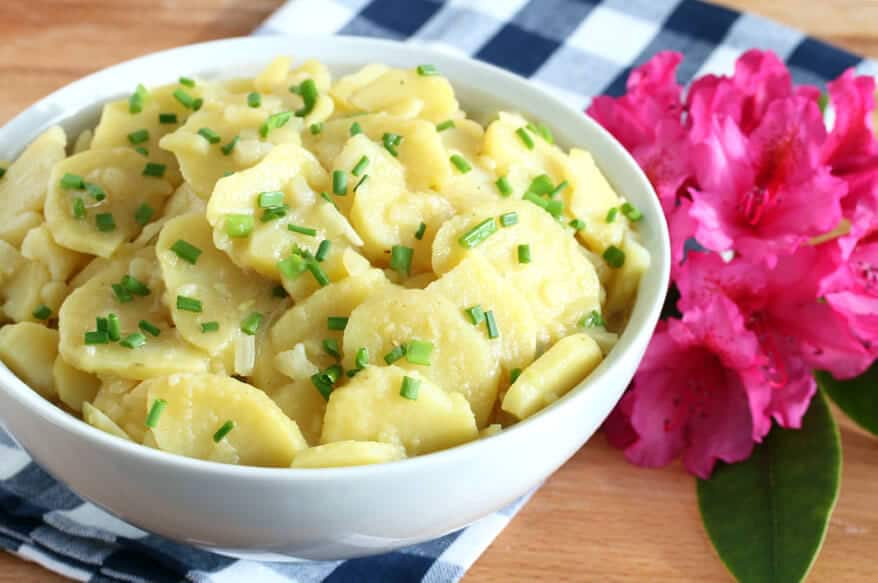
3) Kartoffelsalat
Kartoffelsalat, or German potato salad, is a popular dish with many regional variations.
For a classic version, boil potatoes until tender. Slice them thin or cube them and set aside.
In a saucepan, mix onions, vinegar, salt, pepper, sugar, and mustard. Bring to a boil and pour over the potatoes.
Some recipes include bacon. Fry the bacon until crispy, then cook onions in the bacon grease. Add vinegar, sugar, water, salt, and pepper. Pour this mixture over the potatoes.
Swabian-style Kartoffelsalat uses vegetable stock instead of a vinegar mix. Heat the stock, then pour it over peeled and sliced potatoes combined with onions, mustard, salt, and pepper.
Serve warm and garnish with parsley or chives if desired.
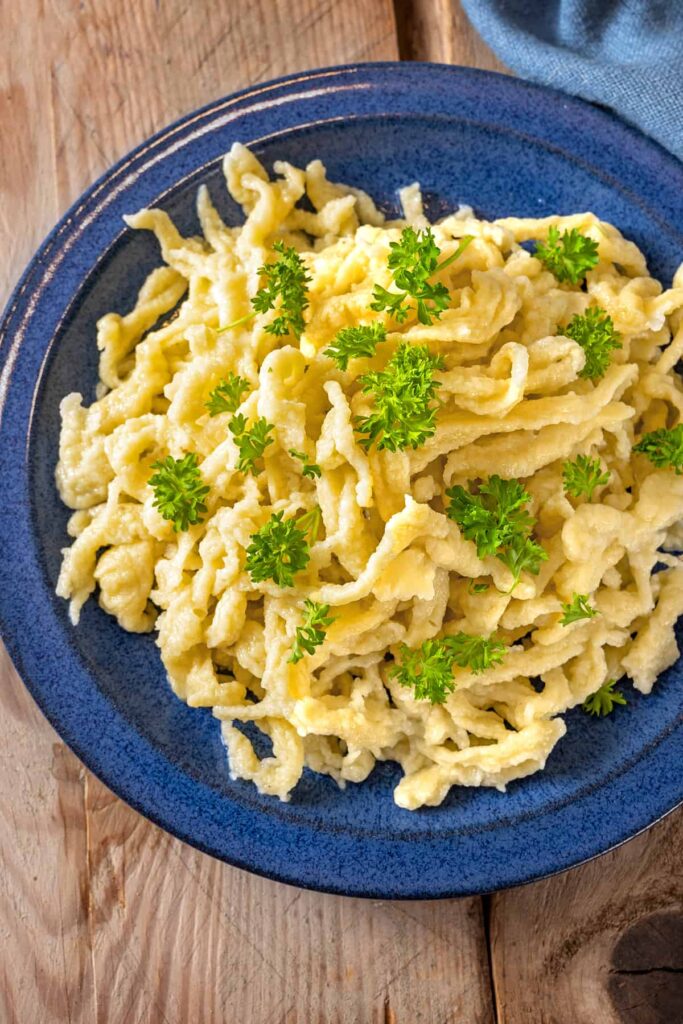
4) Spätzle
Spätzle is a traditional German egg noodle. It originated in the regions of Swabia and Bavaria. You can enjoy it as a side dish or main course.
To make Spätzle, mix flour and salt in a bowl. Then, whisk eggs and add them to the flour. Gradually add milk or water while stirring until the dough is smooth.
Boil a large pot of salted water. Reduce the heat to a simmer. Press the dough through a Spätzle maker or a colander with large holes into the simmering water.
Cook until the noodles float to the top, which takes just a few minutes. Remove them with a slotted spoon and drain.
Spätzle pairs wonderfully with cheese, butter, or gravy. You can also fry it lightly for a crisp texture. It’s versatile and perfect for soaking up rich sauces.
Try adding nutmeg to the dough for extra flavor. Spätzle is simple, yet it delivers a hearty taste that complements many dishes.
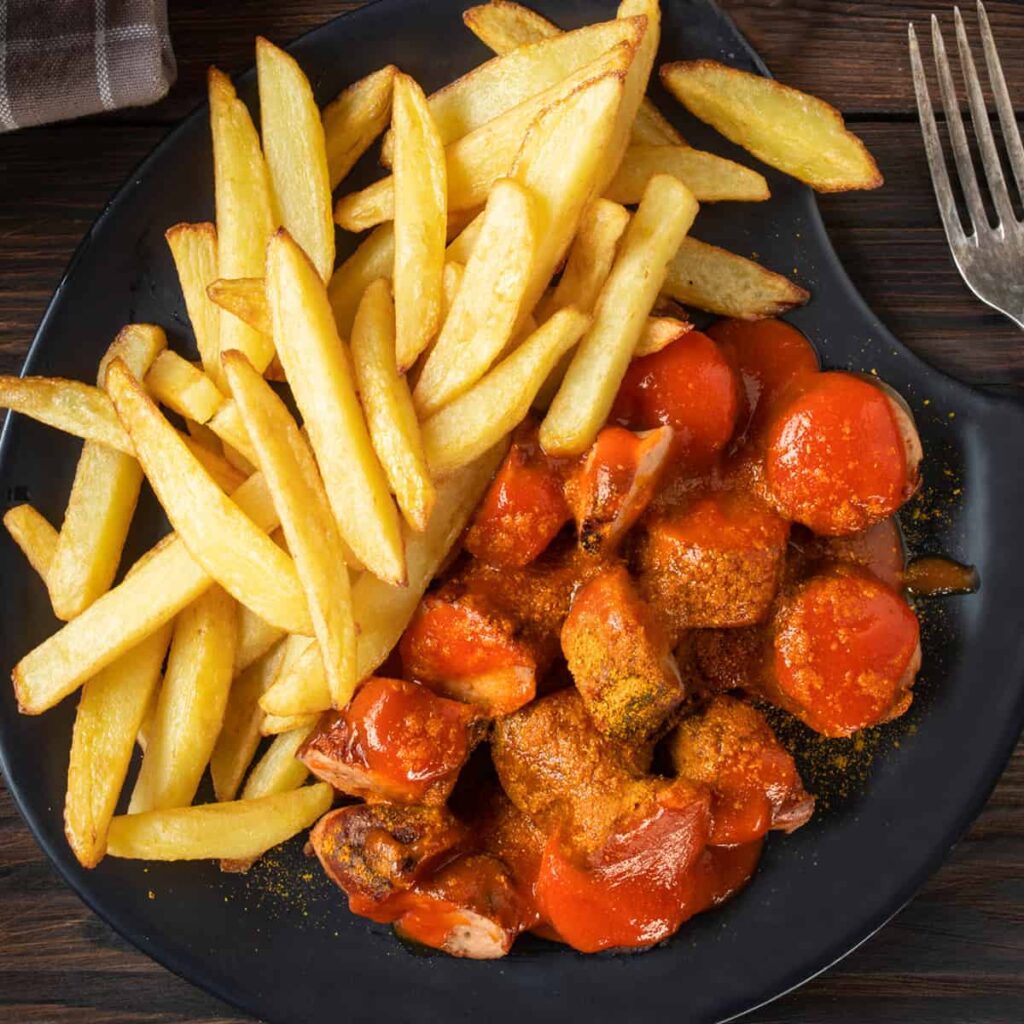
5) Currywurst
Currywurst is a popular German street food that you’ll often find at food stands and festivals. It features a grilled or fried pork sausage cut into slices and topped with a flavorful curry ketchup sauce.
To prepare Currywurst, start by sautéing diced onions until they become soft and translucent. Adding tomato paste to the onions and frying briefly enhances the depth of the sauce.
Deglaze the pan with a bit of water or vinegar. Stir in ketchup, curry powder, and paprika. Some recipes also include ingredients like honey, soy sauce, or balsamic vinegar to balance the flavors.
Simmer the mixture, allowing the flavors to meld together. Some recipes suggest using an immersion blender to achieve a smooth consistency.
Finally, pour this sauce over slices of cooked sausage. Sprinkle a bit more curry powder on top for an extra kick.
Serve your Currywurst with crispy fries or a hearty roll to soak up the sauce. This simple yet delicious dish captures the essence of German street food culture.
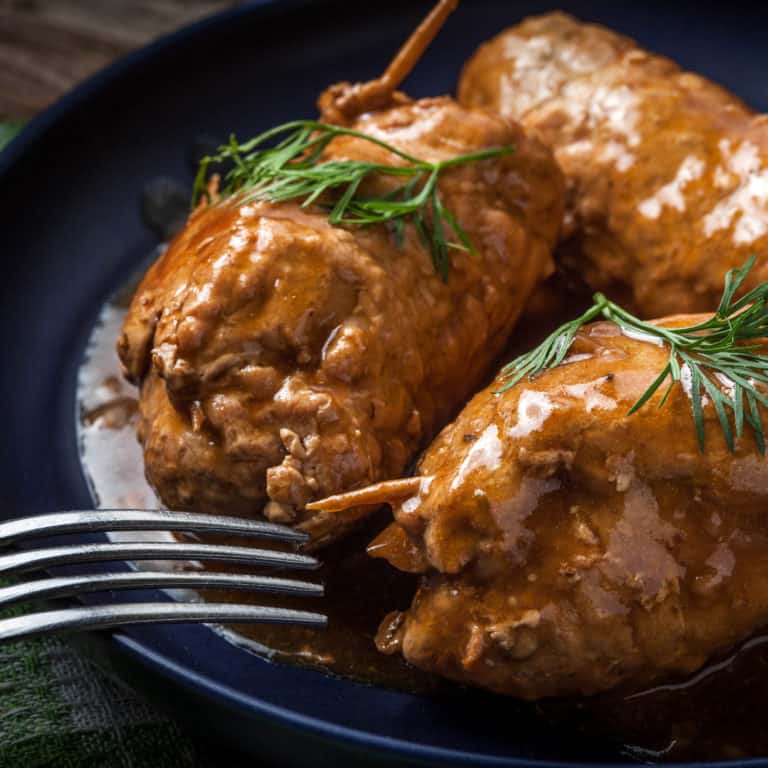
6) Rouladen
Rouladen is a traditional German dish that features thin slices of beef rolled around a filling.
You start by seasoning the beef with salt and pepper. Next, spread a layer of mustard over the meat. Place a slice of bacon, some chopped onions, and pickles on top.
Carefully roll up the beef, tucking in the sides to keep the filling in place. Secure the rolls with kitchen twine or toothpicks.
Brown the rouladen on all sides in a hot pan. This helps to seal in the flavors and gives the meat a nice color.
After browning, you add vegetables like leeks, carrots, and celery to the same pan. Sauté for a few minutes before adding tomato paste and sugar.
Pour in red wine and beef broth, then bring it to a boil. Reduce the heat and let it simmer. Nestle the rouladen back into the pan.
Cover the pan and cook the rouladen slowly until the meat is tender. This usually takes about 1½ to 2 hours.
Rouladen is often served with gravy made from the cooking liquids. Popular side dishes include potatoes, red cabbage, or dumplings. You will enjoy this hearty and flavorful dish.
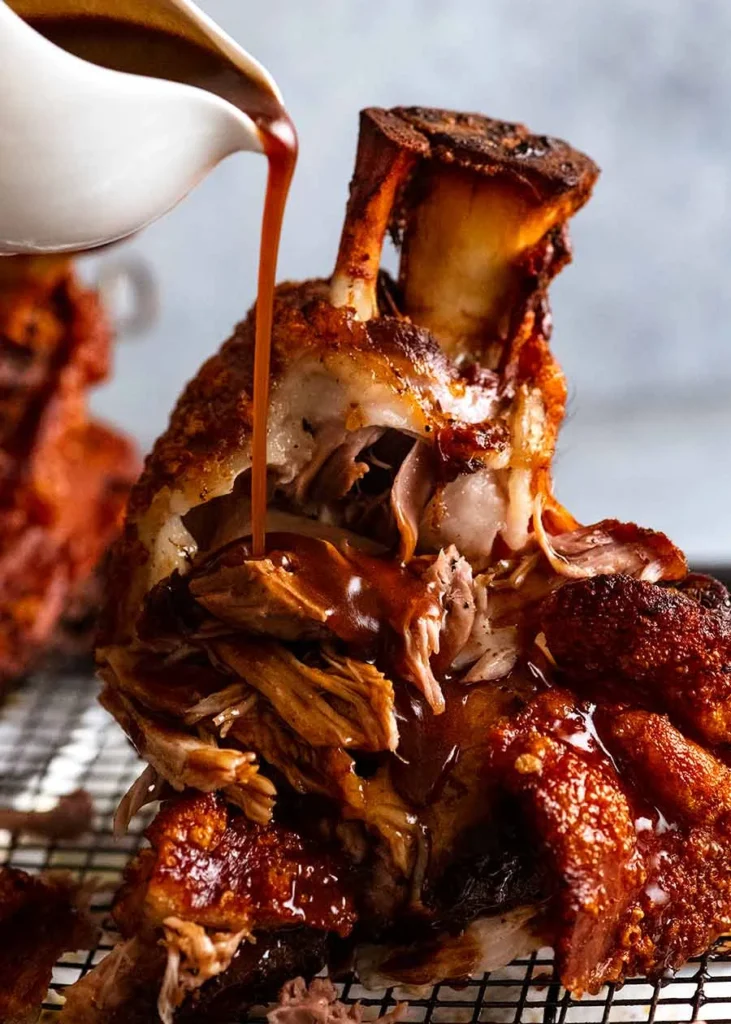
7) Schweinshaxe
Schweinshaxe, or German pork knuckle, is a flavorful and crispy dish. It is commonly served in Bavaria and enjoyed with a generous amount of beer.
To make Schweinshaxe, preheat your oven to around 350°F (180°C). Rub the pork knuckle with salt, pepper, and other seasonings such as caraway seeds or garlic.
Place the pork knuckle on a rack in a roasting pan. Roast it for about 2-3 hours. Make sure to rotate the tray midway through the roasting process.
To ensure a crispy skin, you can finish by broiling the pork knuckle for the last 5-10 minutes of cooking. Keep an eye on it to avoid burning.
Typically, the pork knuckle is served with sides like sauerkraut, roasted potatoes, or dumplings. Don’t forget the mustard for dipping!
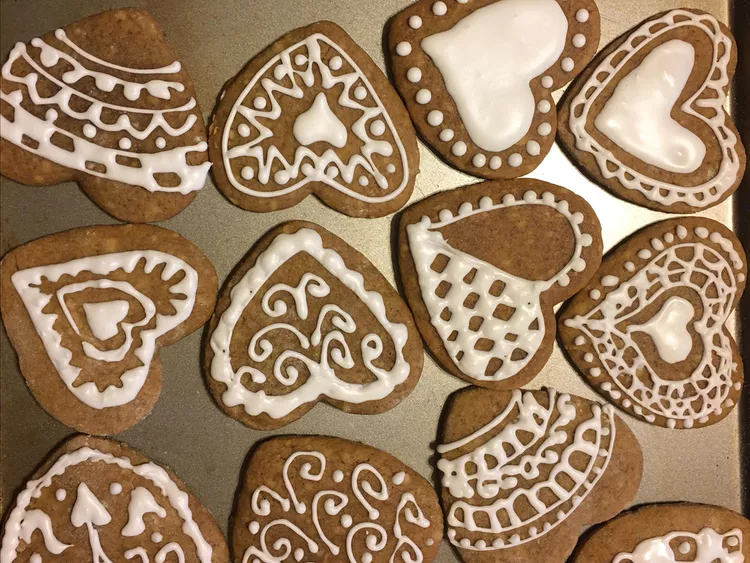
8) Lebkuchen
Lebkuchen are traditional German Christmas cookies, often likened to gingerbread. These spiced cookies are usually soft and chewy, with a rich flavor from honey and a blend of spices like cinnamon, cloves, and nutmeg.
To make Lebkuchen, you start by mixing all-purpose flour with spices and baking soda. In another bowl, beat eggs with sugar, honey, and sometimes molasses for added depth. Combine the wet and dry ingredients to form a dough.
Include finely minced candied lemon and orange peel to enhance the flavor. A food processor helps with mincing. The candied peel adds a citrusy zing that balances the spices.
Scoop the dough using a cookie scoop, and place it on a baking sheet, leaving space between each cookie. Bake them until they turn light brown, typically 10-20 minutes.
Once baked, you can glaze your Lebkuchen. Use a simple glaze made from powdered sugar and lemon juice or cover them with melted chocolate. Both options add a delightful finishing touch.
Lebkuchen cookies are perfect for holiday gift-giving or enjoying with a cup of hot cocoa. Their warm, spicy aroma and rich flavor are sure to make them a favorite during the festive season.
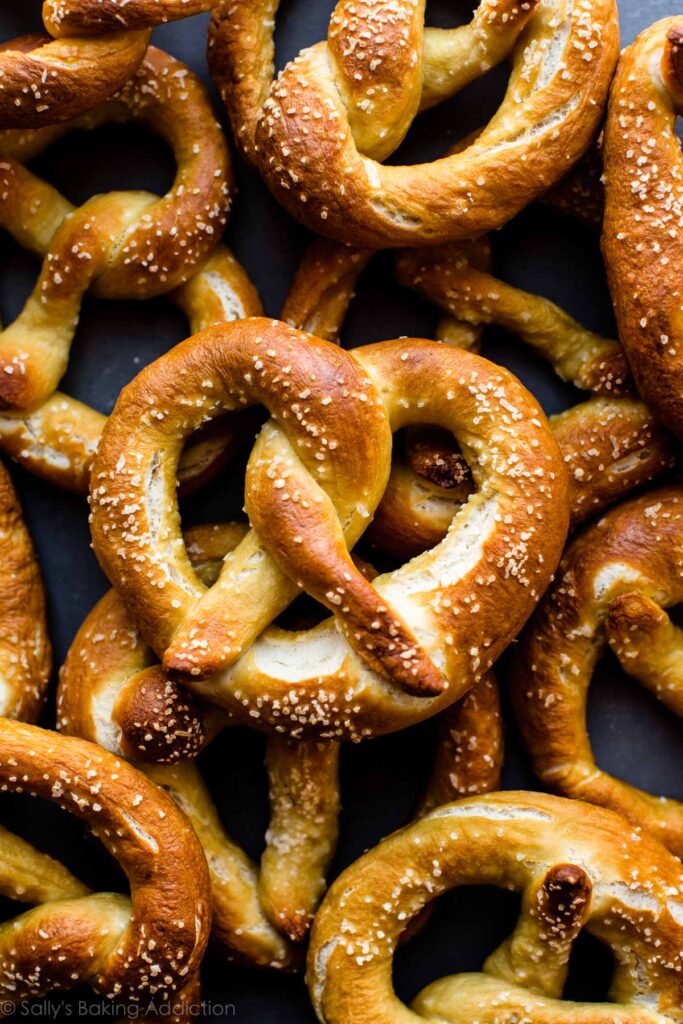
9) Pretzel
Pretzels are a beloved German snack with a rich history. Known in German as “Laugenbrezeln” or just “Brezeln,” these twisted bread treats are both soft and chewy inside, with a crisp, golden-brown crust outside.
To start, you’ll need some simple ingredients: flour, water, yeast, salt, and butter. For the signature flavor and texture, a baking soda bath is essential. This gives pretzels their unique taste and chewy crust.
Begin by mixing warm water, yeast, and a bit of sugar. Let it sit until it’s foamy. This means your yeast is active. Add flour, salt, and butter to your mixture, then knead the dough. Let it rise until it has doubled in size.
Once your dough is ready, divide it into equal parts and shape each piece into a pretzel. The classic shape is a twisted knot, but you can also make them into sticks or rolls.
Before baking, boil your pretzels in water mixed with baking soda for about 30 seconds. This is what gives pretzels their shiny crust. After boiling, transfer them to a baking sheet, sprinkle with coarse salt, and bake until golden brown.
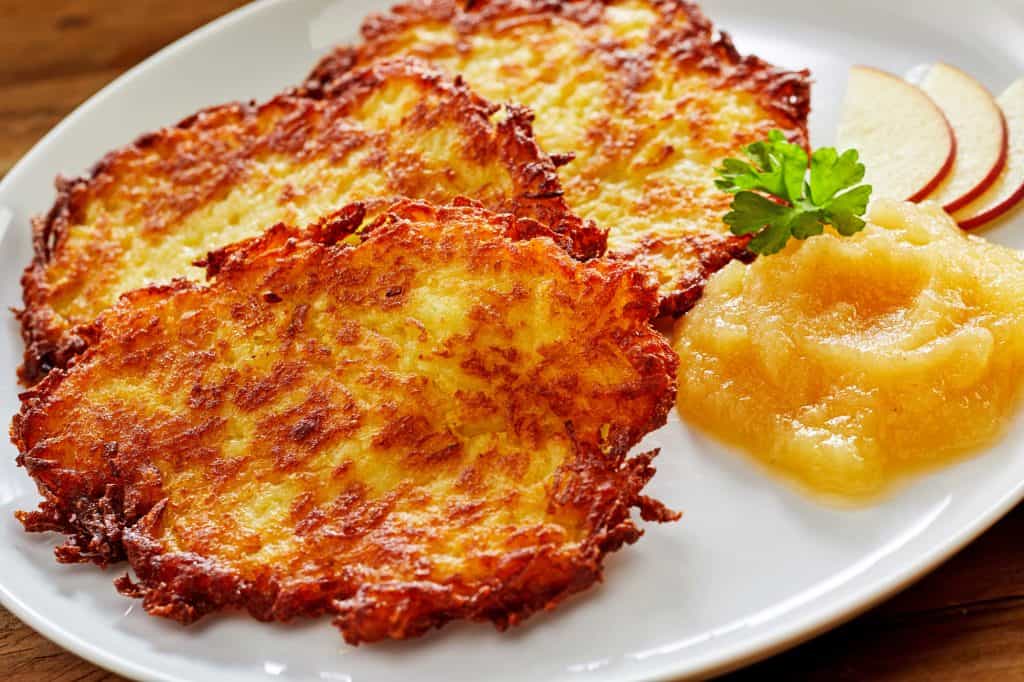
10) Kartoffelpuffer
Kartoffelpuffer, also known as German potato pancakes, are a tasty and crispy side dish. They are made using simple ingredients like potatoes, onions, eggs, and a bit of flour.
Start by washing, peeling, and grating the potatoes. It’s important to squeeze out as much liquid as you can from the grated potatoes. This helps the pancakes get crispy.
In a large bowl, mix the grated potatoes with finely chopped onions, eggs, flour, salt, and pepper. Once the mixture is ready, heat oil in a frying pan over medium heat.
Drop spoonfuls of the potato mixture into the hot oil, pressing them down with the back of a spoon to flatten. Fry each side for about 3-5 minutes until they are golden brown.
Place the cooked Kartoffelpuffer on paper towels to absorb excess oil. Serve them immediately while they are still hot. They are often enjoyed with apple sauce or sour cream.
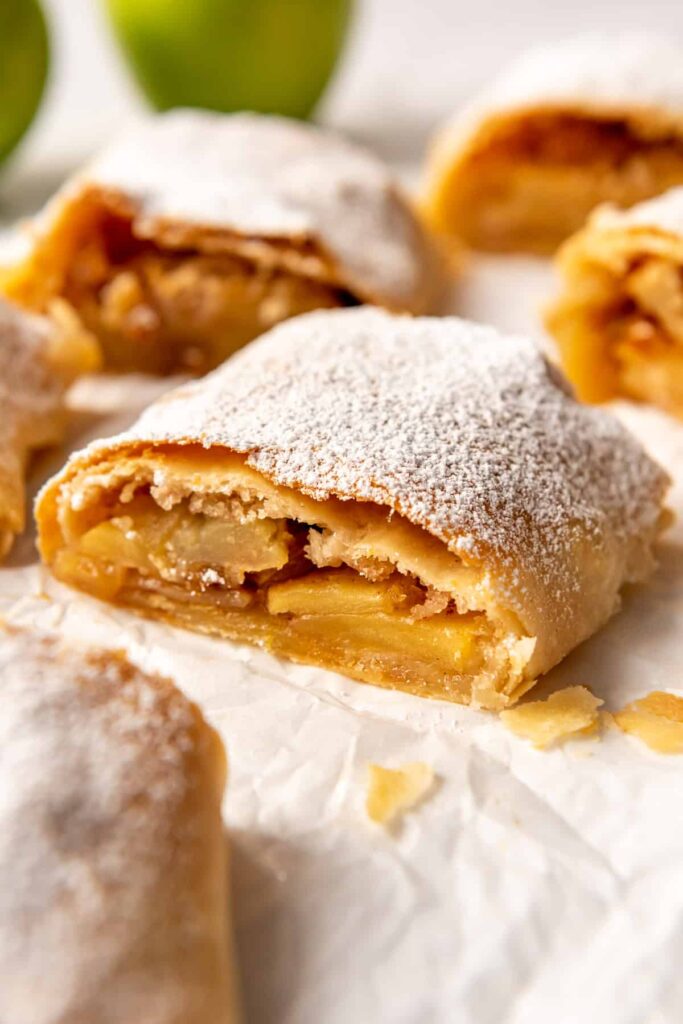
11) Apfelstrudel
Apfelstrudel, or apple strudel, is a classic German dessert. It features thin, flaky dough filled with sweet, spiced apples. To start, you mix flour and salt in a bowl. Add water, oil, and vinegar to form a soft dough.
Knead the dough until it’s smooth. Let it rest under a warm cloth. For the filling, peel and slice your apples. Mix them with sugar, cinnamon, and breadcrumbs.
Roll out the dough very thin on a floured cloth. Spread the apple filling on the dough, leaving a small border. Fold the short edges, then use the cloth to roll the strudel.
Brush the strudel with melted butter. Cut small slashes on top. Bake it at 375°F for 20-25 minutes until golden brown. Serve warm, possibly with vanilla ice cream or sauce.
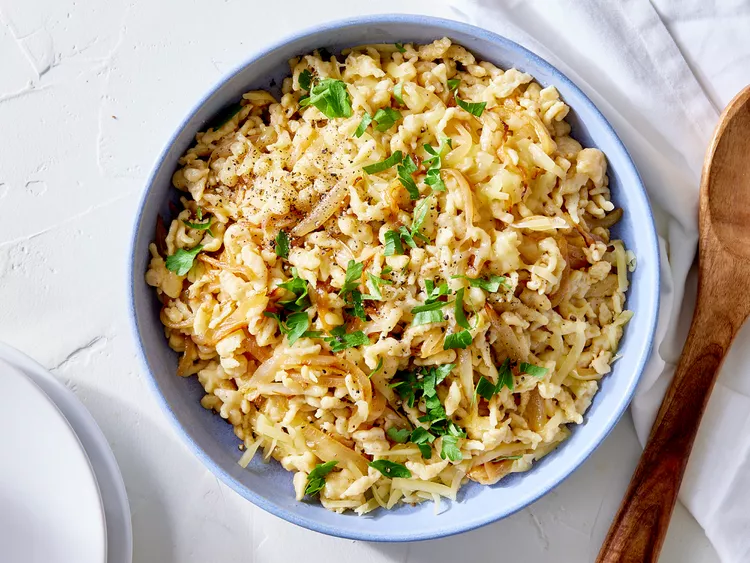
12) Käsespätzle
Käsespätzle is a German dish that combines handmade egg noodles with cheese and onions. It’s like a German version of mac and cheese.
To start, you need to make the Spätzle noodles. You’ll mix flour, eggs, and a bit of water to form a dough. Then, you’ll push the dough through a special device to create small, irregularly shaped noodles.
Once your noodles are ready, cook them in boiling water until they rise to the surface. Drain them well.
Melt butter in a skillet. Add the noodles and cook until they get a bit crispy on the edges. Gradually add shredded cheese, stirring frequently so it melts evenly.
For extra flavor, caramelize onions in a separate pan with butter and a pinch of salt. This takes time, but the result is worth it. When the onions are deeply golden, mix them into the noodles.
You can also bake Käsespätzle. Combine the noodles, cheese, and onions in a baking dish with a splash of cream. Bake at 375°F until the top is golden and bubbly.
Serve your Käsespätzle hot. Sprinkle with fresh chives if you like. This dish pairs well with a crisp green salad or steamed vegetables. Enjoy your hearty, cheesy German comfort food!
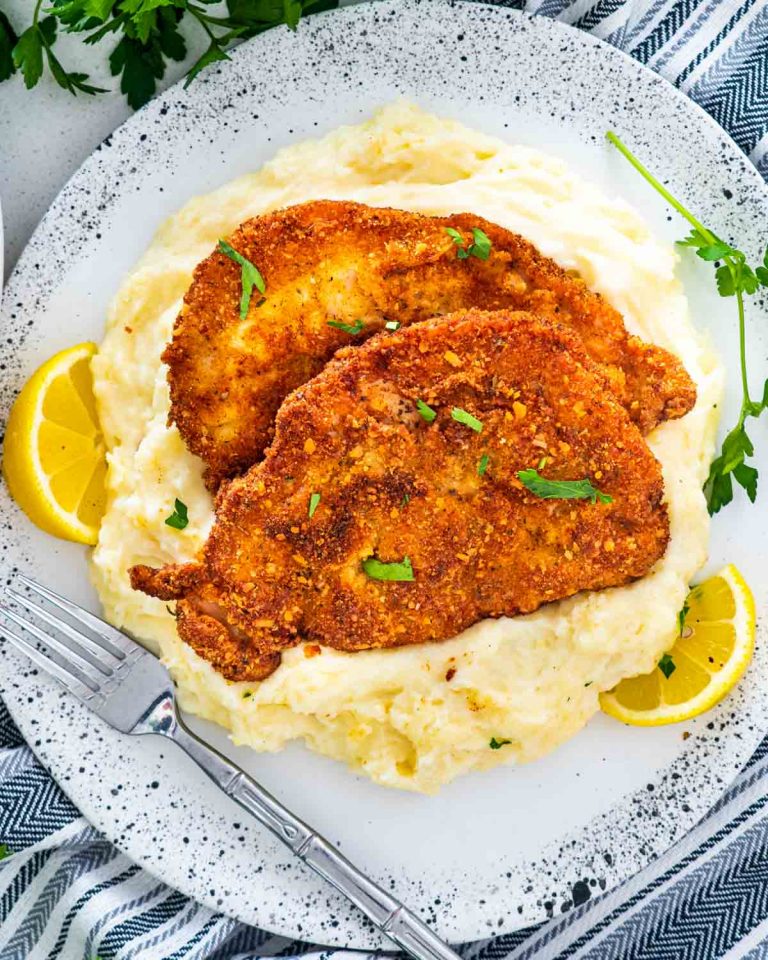
13) Schnitzel
Schnitzel is a classic German dish made from thin, breaded, and fried meat. You can use pork, veal, or chicken for the meat.
First, pound the meat to about ¼-inch thickness. This helps it cook evenly and stay tender.
Season both sides with salt and pepper. Prepare three bowls: one with flour, one with beaten eggs, and one with breadcrumbs.
Dip the meat into the flour, then the beaten eggs, and finally the breadcrumbs. Make sure to coat all sides, but don’t press the breadcrumbs too hard into the meat.
Heat oil or butter in a pan over medium-high heat. Fry each piece until golden brown, usually 2-3 minutes per side.
Serve Schnitzel with lemon wedges and a side of potatoes or salad for a truly authentic meal.
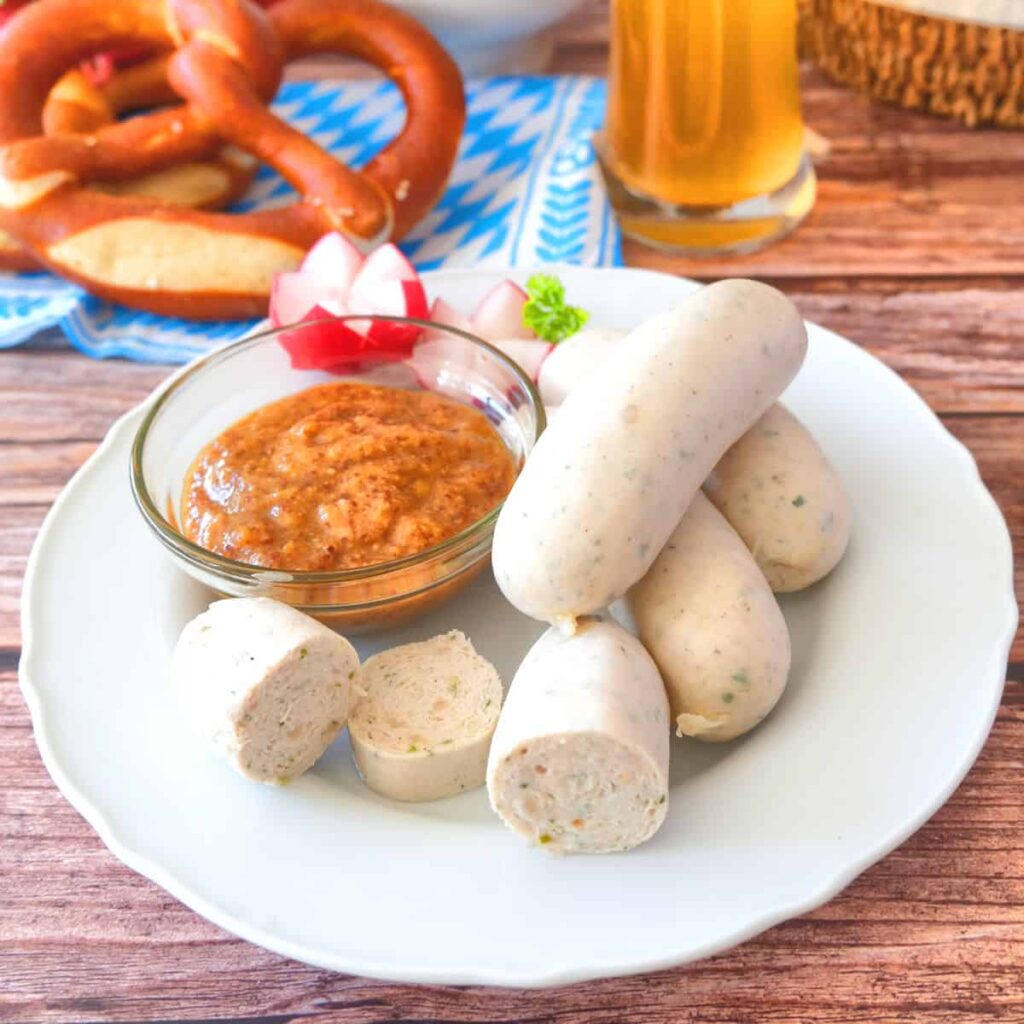
14) Weißwurst
Weißwurst is a famous German sausage. It is especially popular in Bavaria. This sausage is made from veal and pork back bacon, mixed with herbs and spices. A hint of lemon adds freshness.
You should cook Weißwurst in hot water, not boiling it. The ideal temperature is around 75°C (167°F). Let the sausage steep in hot water for about 30 minutes. This gentle cooking method helps maintain its delicate flavor and texture.
Weißwurst is traditionally eaten for breakfast. Serve it with a side of pretzels and sweet mustard. The traditional way to eat it is by sucking the meat out of the casing, known as “zuzeln.”
Weißwurst has become a beloved part of German cuisine. Next time you are looking to make an authentic German meal, consider adding Weißwurst to your menu. It’s a treat that showcases Bavarian culinary traditions.
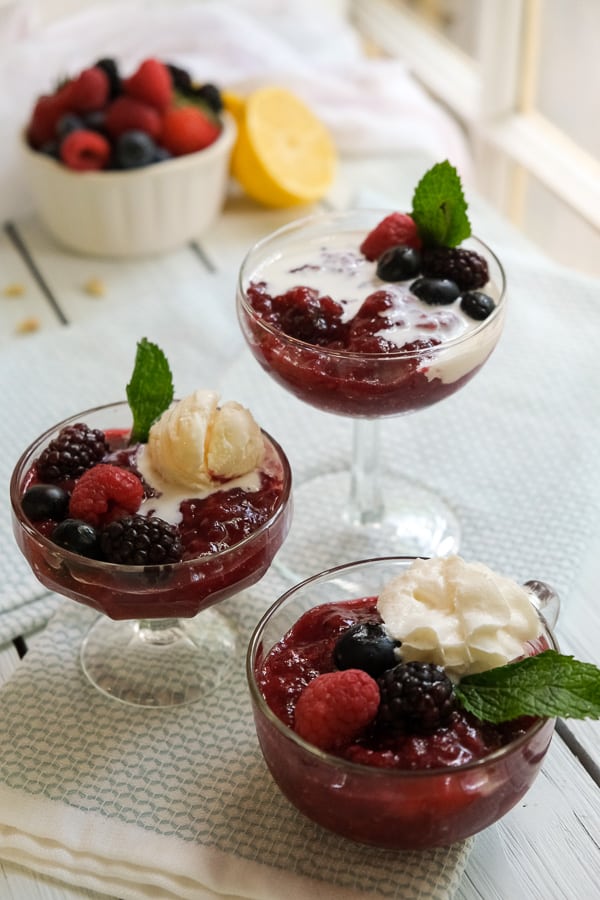
15) Rote Grütze
Rote Grütze is a classic German dessert made with a mix of red berries. It’s popular for its fresh taste and simple preparation. You use a combination of fruits like strawberries, raspberries, and cherries.
First, wash the fruit and remove any stems. Cut larger fruits, like strawberries, into small pieces. In a medium pot, add red fruit juice, sugar, and vanilla extract.
Mix some cornstarch with a bit of fruit juice in a small bowl until it dissolves. Pour this into the pot. Bring everything to a gentle boil, stirring constantly. Let it simmer for about 5 minutes until it thickens.
If the mixture feels too thick, you can add more fruit juice. Once ready, pour the mix into bowls and let it cool. Serve Rote Grütze with fresh heavy cream on top. This dessert is both simple and delicious, perfect for summer days.
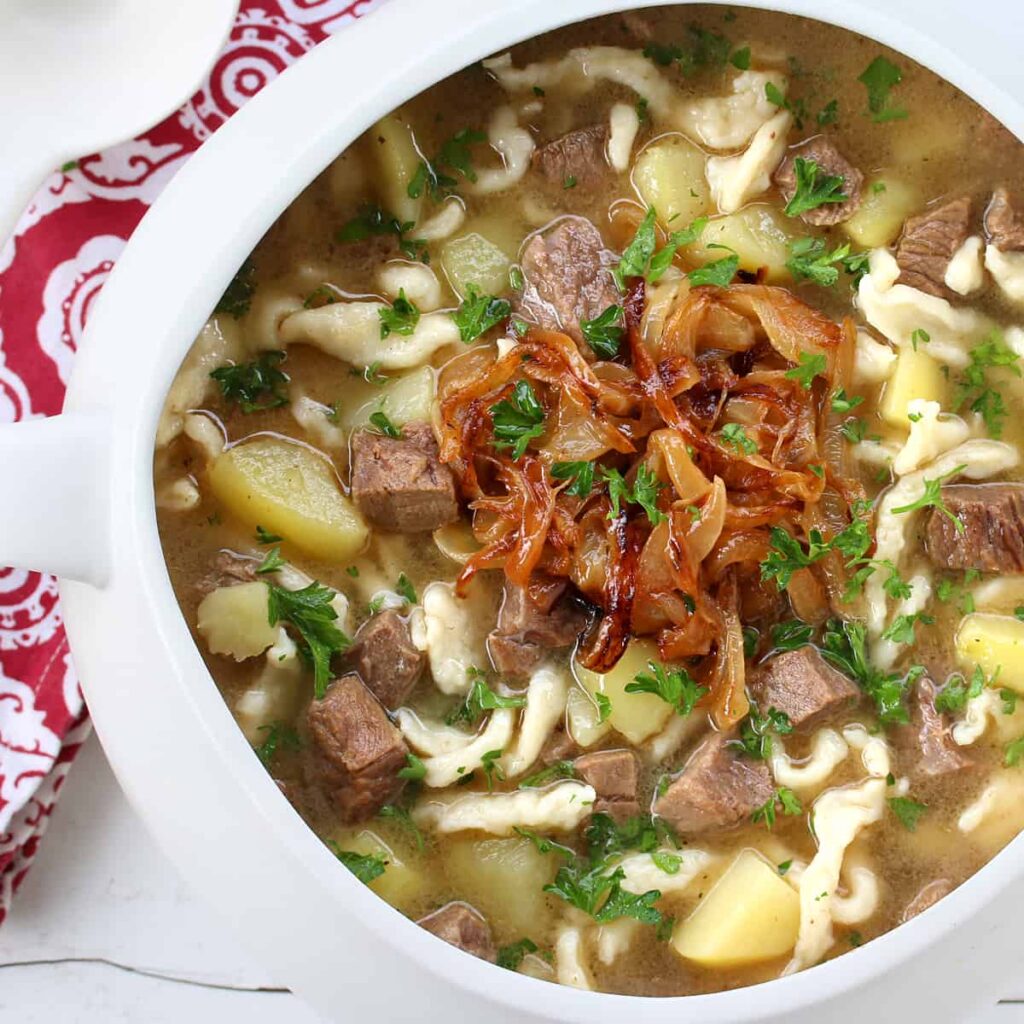
16) Gaisburger Marsch
Gaisburger Marsch is a hearty beef stew from Germany. It’s known for its rich flavors and comforting ingredients. This dish typically includes beef, potatoes, carrots, and celery.
Start by simmering beef shanks in water with onions, garlic, and spices like bay leaf and peppercorns. Cook until the beef is tender.
Add cubed potatoes and simmer until they are soft. The broth becomes flavorful as it cooks. To make it even more satisfying, add Spaetzle, a type of German noodle.
Finish with a sprinkle of fresh parsley. The result is a warm, savory stew perfect for cold days.
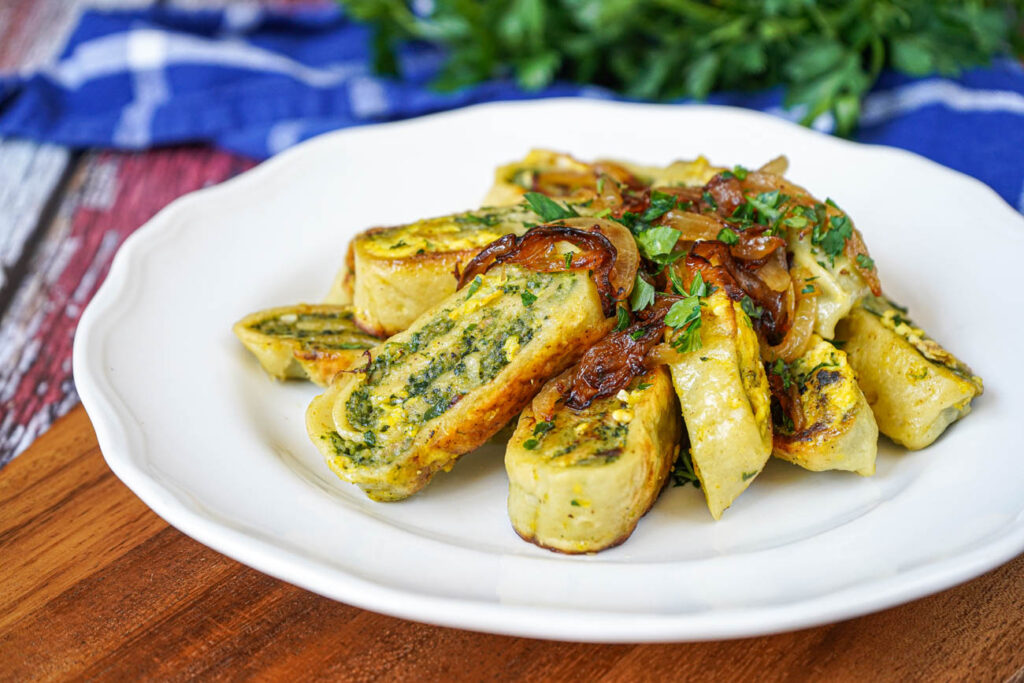
17) Maultaschen
Maultaschen is a traditional German dish that resembles large dumplings or stuffed pasta. It is often made with a dough that wraps around a savory filling.
You should start by making the dough from flour, eggs, and water. Roll it out into thin sheets.
The filling usually includes ground meat, spinach, onions, and breadcrumbs mixed with spices like nutmeg and parsley.
To assemble, put a portion of the filling on the dough sheets, fold them over, and press the edges to seal tightly. Cut the folded dough into individual pieces.
Cook the Maultaschen in simmering water or broth to enhance their flavor. They usually need about 10-20 minutes to cook until they float and are fully heated.
You can serve Maultaschen in various ways. Some prefer them plain, while others enjoy them in a broth or with sautéed onions.
Maultaschen can also be pan-fried for a crispy texture. This adds a different dimension to the dish.
Remember to enjoy this versatile and delicious German specialty by experimenting with fillings and serving styles.
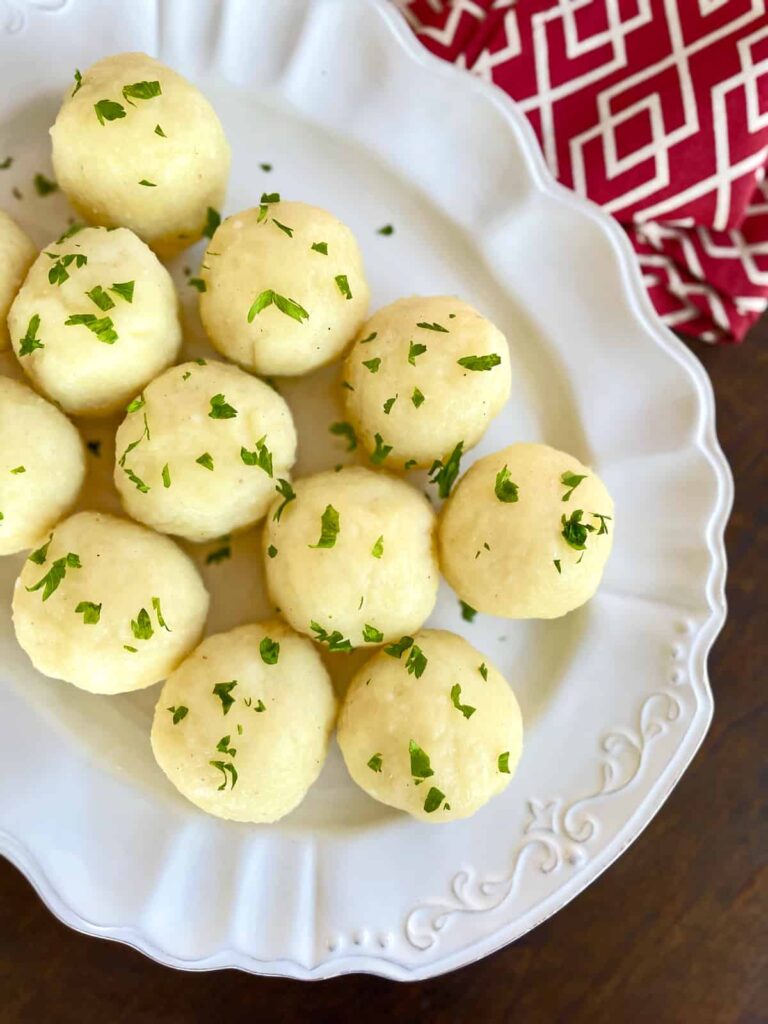
18) Knödel
Knödel, also known as German bread dumplings, are a tasty and traditional side dish in German cuisine. Often made from day-old bread, these dumplings are tender and savory, perfect for soaking up sauces from meat dishes like rouladen or sauerbraten.
To make knödel, start by cutting stale bread into small cubes. Then, pour hot milk over the bread and let it sit for about 20-30 minutes until softened. Fry finely chopped onions in butter until they are transparent but not browned.
Add the cooked onions to the bread mixture along with eggs, parsley, salt, pepper, and nutmeg. Mix well using your hands until the dough is smooth and sticky. Form the dough into balls, roughly the size of a tennis ball, using wet hands or spoons.
Bring a large pot of salted water to a boil. The water should be a few inches deep. Gently place the knödel in the boiling water and let them cook for about 20 minutes. Once done, they should be firm and easy to handle without falling apart.
Knödel can be enjoyed as is or pan-fried in slices for a crispier texture. They make a great addition to many hearty German meals and are an excellent way to use up old bread.
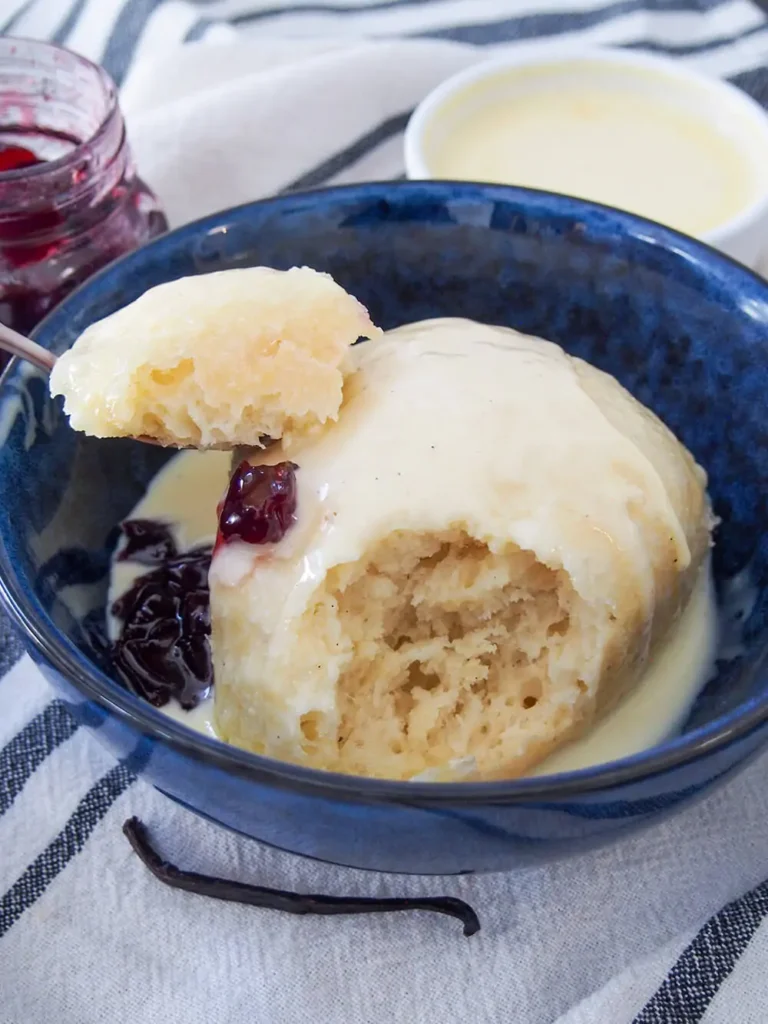
19) Dampfnudel
Dampfnudel, also known as German yeast dumplings, is a traditional dish enjoyed across Germany. It’s often served as a sweet treat or a hearty meal.
To make Dampfnudel, you start by mixing yeast, warm milk, and a bit of sugar. Let this mixture sit for a few minutes until it becomes foamy.
In a separate bowl, cream butter with more sugar, then add eggs, more milk, and salt. Combine this with the yeast mixture and enough flour to form a dough.
Knead the dough on a lightly floured surface until smooth. Then, let it rise in a warm place until it doubles in size.
Once the dough has risen, shape it into small balls and let them rise again.
To cook, melt butter in a large pot and add milk and sugar. Carefully place the dough balls into the pot, making sure not to submerge them in the milk.
Cover the pot with a tight-fitting lid and cook on low heat until the dumplings are puffed and cooked through.
Dampfnudel can be served with vanilla sauce, fruit compote, or even savory accompaniments like cabbage. Enjoy your Dampfnudel warm for the best taste and texture.
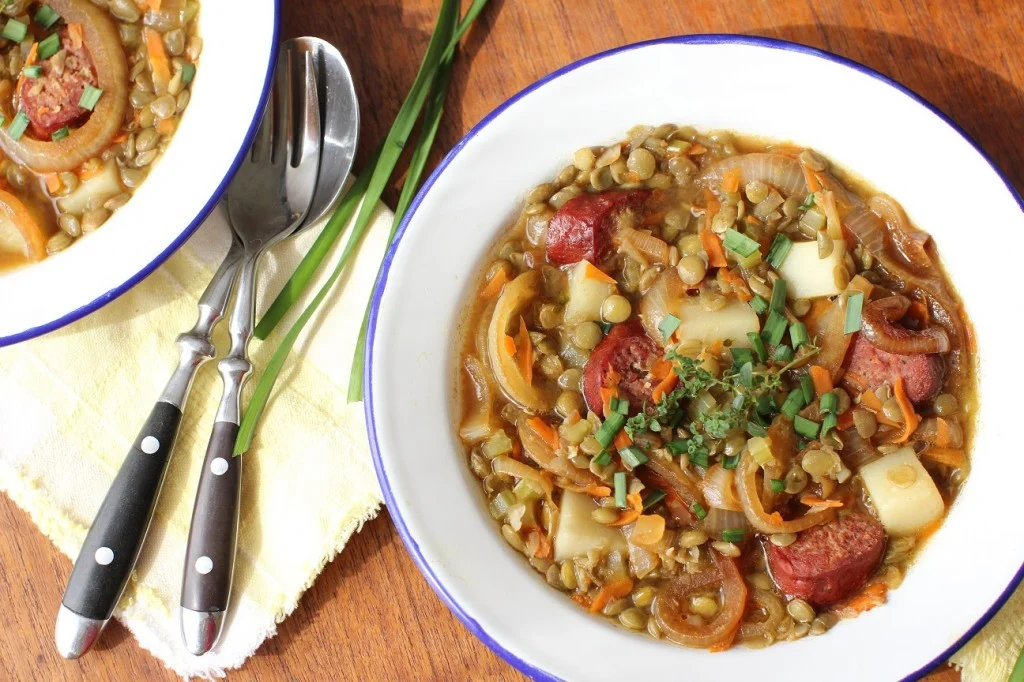
20) Eintopf
Eintopf is a beloved German one-pot stew. It’s a hearty dish perfect for cold weather. The word “Eintopf” translates to “one pot,” signifying its simplicity and ease of preparation.
You start by heating some olive oil in a large pot over medium heat. Add diced onions and sauté until they become translucent. Then, add in sliced celery, diced carrots, and potatoes, stirring well to combine with the onions.
For added flavor, you can include beef stew meat or sliced smoked sausage. Brown these meats on all sides before adding them to the pot. If you prefer a vegetarian version, simply skip the meat and enjoy the rich flavors from the vegetables.
Cooking times can vary, but you should let the stew simmer until all the vegetables are tender. Common seasonings include salt, pepper, and bay leaves.
Eintopf is versatile, and you can use seasonal vegetables like fennel, squash, and sweet potatoes. Make sure to adjust the seasoning to suit your taste.
Enjoy your Eintopf with a slice of crusty bread to soak up the delicious broth. This simple yet satisfying dish is a staple in German cuisine and is sure to warm you up.
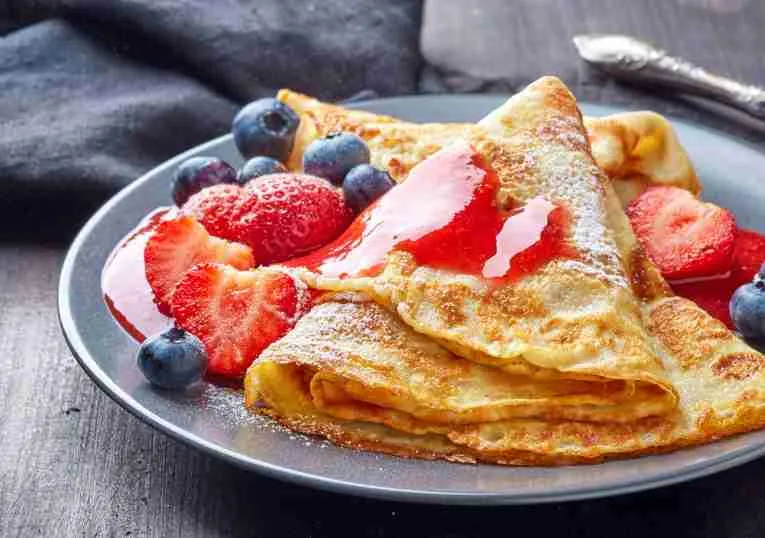
21) Pfannkuchen
Pfannkuchen, also known as German pancakes, are a popular dish in Germany. They are thin, crepe-like pancakes that can be enjoyed in various ways.
To make Pfannkuchen, start by mixing flour, eggs, milk, and a pinch of salt in a large bowl. You can use a stand mixer or a hand whisk. Mix until the batter is smooth.
Let the batter rest for about 10 minutes. This helps the ingredients blend well. After resting, add a small amount of sparkling water to make the batter lighter.
Heat a medium-sized pan over medium heat and add a bit of oil or butter. Pour a ladle of batter into the pan. Tilt the pan to spread the batter evenly.
Cook the Pfannkuchen until bubbles form on the surface. Flip and cook the other side until golden brown. Serve immediately or keep them warm by covering them with another plate.
You can enjoy Pfannkuchen with various toppings like sugar, lemon juice, applesauce, or jam. For a savory option, fill them with cheese, ham, or vegetables.
Pfannkuchen are versatile and easy to make, making them a great choice for any meal.
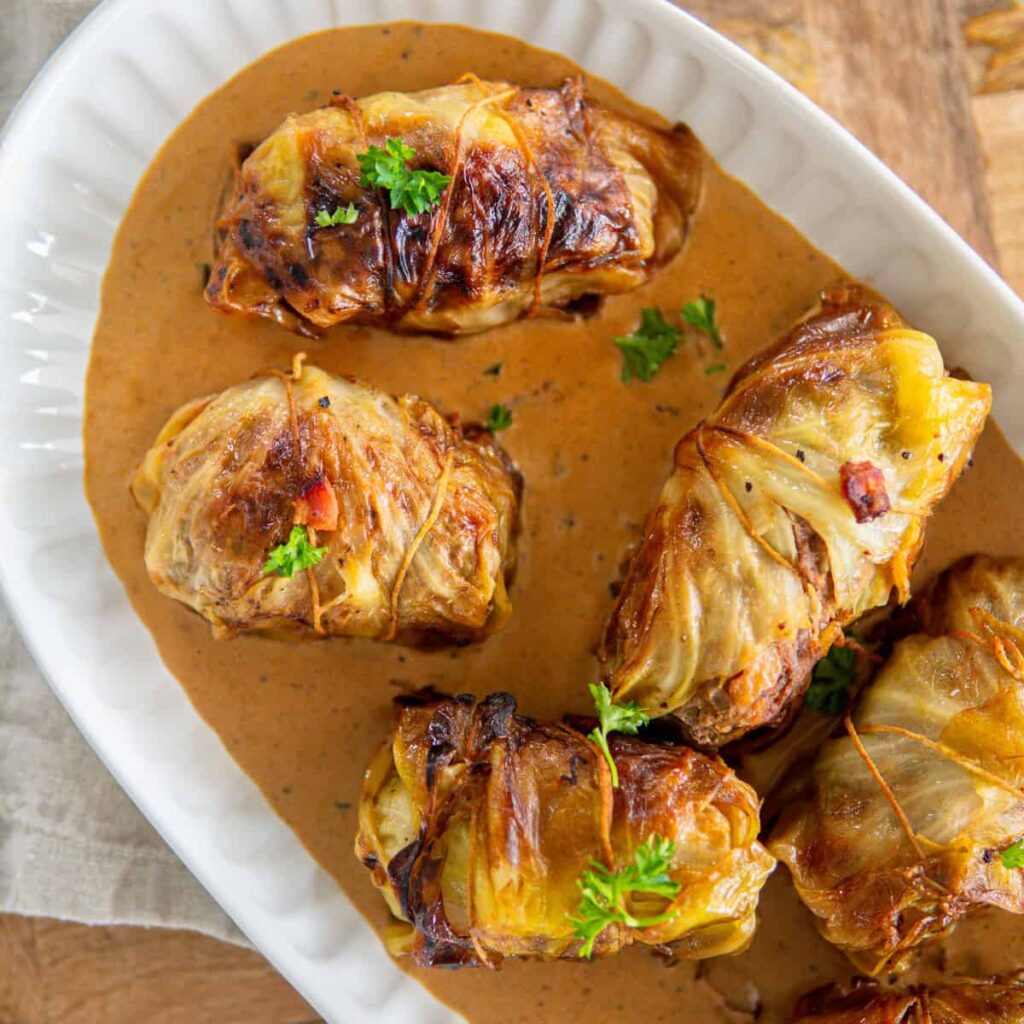
22) Kohlrouladen
Kohlrouladen, also known as German stuffed cabbage rolls, is a hearty and comforting dish. It’s a popular traditional recipe in many German households. The main ingredients are cabbage leaves, ground meat, and some basic seasonings.
You start by blanching whole cabbage in boiling water for about 5-10 minutes until the leaves are pliable. Remove the leaves and dip them in cold water to stop the cooking process.
The filling usually has a mix of ground beef and ground pork, seasoned with onions, breadcrumbs, eggs, salt, and pepper. Place a spoonful of the mixture on each cabbage leaf. Roll them up tightly, tucking in the sides. Use a wooden toothpick or baker’s twine to secure the rolls.
Heat a bit of oil in a deep pan or pot. Brown the cabbage rolls on all sides. Add chopped bacon and simmer the rolls with beef broth for about 30-50 minutes. Cover the pan with a lid to keep them moist.
Once cooked, remove the rolls and reduce the remaining liquid to make a flavorful brown gravy. You can thicken it with cornstarch if needed. Kohlrouladen is often served with mashed potatoes or bread dumplings.
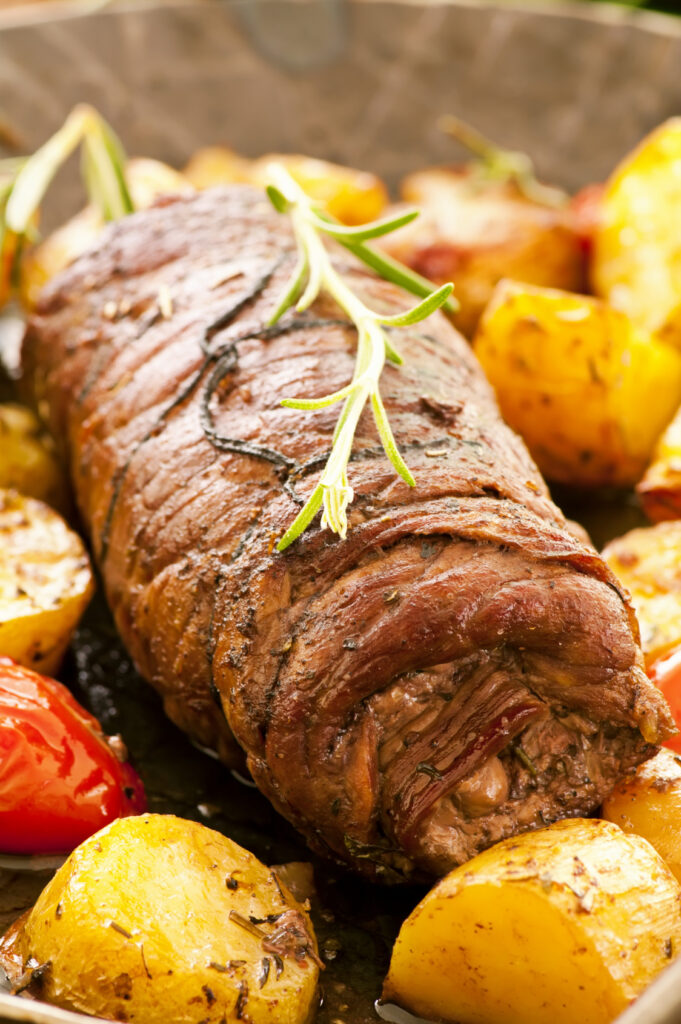
23) Rinderroulade
Rinderroulade, also known as German beef rouladen, is a classic dish. It features thin slices of beef wrapped around a filling of mustard, onions, pickles, and bacon. These rolls are then browned and braised in a flavorful liquid until tender.
To prepare Rinderroulade, start with beef slices, usually from the top round. Spread each slice with mustard. Add slices of onion, bacon, and pickle.
Roll up the beef tightly and secure with toothpicks or kitchen twine. Brown the rolls on all sides in a hot skillet with some butter or oil.
Next, add vegetables like leeks, carrots, and celery for additional flavor. Pour in red wine and beef broth, then bring the mixture to a boil. Reduce the heat and let the rolls simmer slowly.
You can also add tomato paste, bay leaves, and a bit of sugar to the liquid. Some recipes suggest adding pickle juice for an extra tangy touch.
After cooking for about 90 minutes to 2 hours, the beef will be fork-tender. Serve the Rinderroulade hot with its rich gravy. Traditional sides include mashed potatoes, red cabbage, or spaetzle.
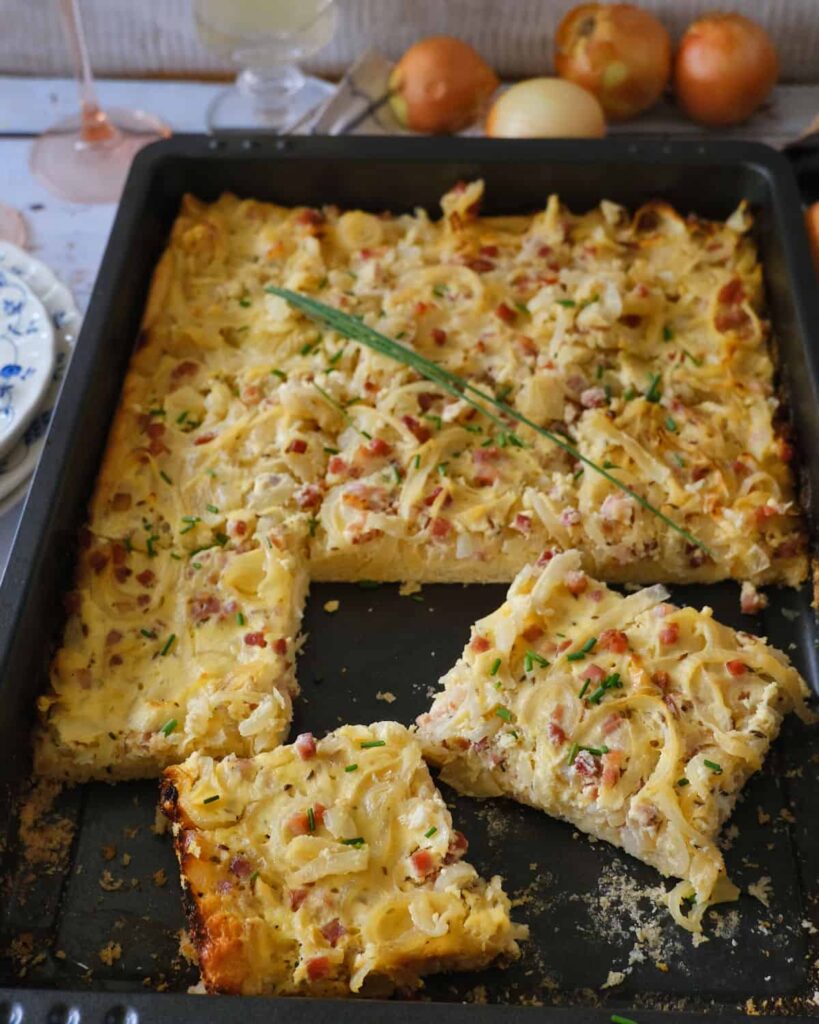
24) Zwiebelkuchen
Zwiebelkuchen, also known as Onion Cake, is a traditional German dish often enjoyed in the fall. This savory pie combines caramelized onions, smoky bacon, and a rich, creamy filling.
To begin, you’ll need to make the crust. Dissolve yeast in warm milk and let it sit for a few minutes. Then, mix it with flour, salt, and butter. Knead the dough until it becomes soft and elastic. Let it rise in a warm place until it doubles in size.
For the filling, sauté onions in a skillet until they become translucent. Cook bacon until it’s crisp, then combine the onions and bacon. You can also mix in some cream, eggs, and seasonings to enhance the flavor.
Roll out the dough on a jelly-roll or large pizza pan, allowing the edges to go up the sides. Pour the onion and bacon mixture over the dough. Bake in a preheated oven at 425°F (220°C) until the crust is golden and the filling is set.
Zwiebelkuchen is perfect for gatherings and can be served warm or at room temperature. It’s a delightful example of hearty German cuisine that pairs wonderfully with a crisp white wine or a cold beer.
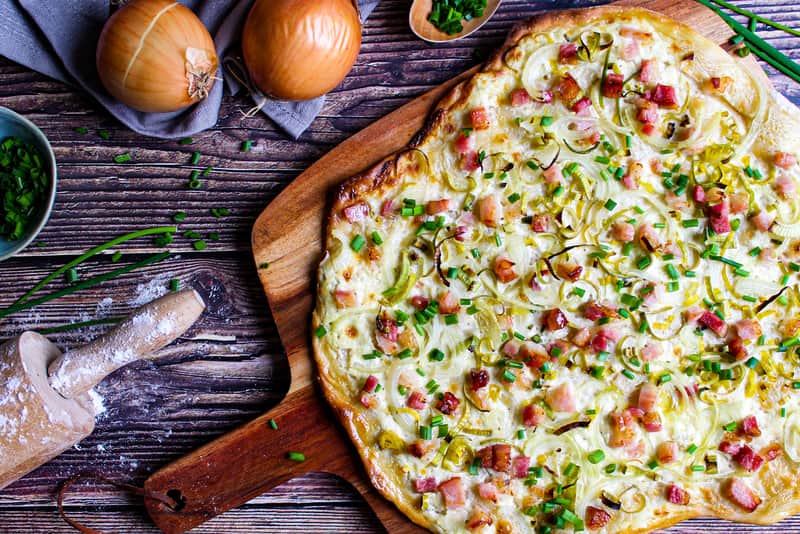
25) Flammkuchen
Flammkuchen, also known as “German pizza,” is a delicious and easy-to-make dish from the Alsace region. This thin flatbread is typically topped with crème fraiche, onions, and bacon.
Start by preparing the dough. Mix together flour, salt, water, and oil in a bowl. Knead the dough on a lightly floured surface until it is soft and smooth, which takes about 3-5 minutes.
After kneading, let the dough rest for around 30 minutes. This helps it become more pliable. Roll out the dough as thin as possible on a sheet of parchment paper.
For the creamy sauce, mix crème fraiche with a bit of salt and pepper. Spread this mixture evenly over the rolled-out dough.
Next, add thinly sliced onions and small pieces of bacon on top of the crème fraiche. These toppings bring a savory and flavorful taste to the Flammkuchen.
Preheat your oven to 500°F (260°C). Carefully transfer the prepared Flammkuchen to a baking sheet. Bake for about 10-12 minutes, or until the edges are crispy and the toppings are golden.
Serve the Flammkuchen hot. It’s perfect for a quick meal or an appetizer. Enjoy the combination of crispy crust, creamy sauce, and savory toppings.
Essential Ingredients for German Cuisine
For authentic German cooking, essential ingredients often include a variety of spices, herbs, and pantry items. These components help bring out the distinct flavors in traditional dishes.
Common Spices and Herbs
Key spices in German cuisine include caraway seeds, juniper berries, and mustard seeds. These spices are often used in dishes like sauerkraut and sausages.
Herbs such as parsley, chives, and dill are also prominent. Parsley is used to garnish soups and stews, while chives add flavor to salads and potato dishes.
Dill is commonly found in pickled vegetables and fish recipes. Together, these spices and herbs provide the rich and aromatic tastes classic to German food.
Staple Pantry Items
Common pantry items in German kitchens include rye flour, quark, and potatoes. Rye flour is essential for making traditional dark breads like pumpernickel.
Quark, a type of soft cheese, is used in a variety of dishes, from cheesecakes to savory spreads. Potatoes are a staple, featured in everything from potato pancakes to hearty stews.
Additionally, mustard and vinegar are often used in sauces and dressings. Keeping these items on hand ensures you are always ready to create authentic German meals.
Techniques for Authentic German Cooking
Authentic German cooking relies on unique techniques that have been passed down through generations. These methods bring out the rich flavors and textures of classic dishes.
Traditional Cooking Methods
Traditional German cooking methods are all about maximizing flavor and ensuring that ingredients are prepared with care. One popular method is braising, which involves cooking meat slowly in a small amount of liquid. This technique is ideal for tough cuts of meat like pork shoulder, making them tender and flavorful.
Fermentation is another key technique, especially for dishes like sauerkraut. Cabbage is salted and allowed to ferment, developing a tangy flavor that complements many German dishes.
Roasting is frequently used for meats such as sausages and poultry. Roasting allows the natural juices to enhance the overall flavor of the dish.
Smoking is also traditional, especially for sausages like bratwurst. This method adds a unique, smoky taste that is crucial for authentic flavor.
Baking Techniques
Baking is an essential part of German cuisine, especially for bread and desserts. Sourdough bread, known as Sauerteig, is a staple and is made using a fermented starter. This bread has a distinctive tangy taste and chewy texture.
Strudel is a famous German pastry, typically filled with apples or other fruits. The dough is rolled thin and layered to create a light, flaky texture.
Kneading dough is a key technique, particularly for making traditional breads and pretzels. Proper kneading activates the gluten, which gives the bread its structure and chewiness.
Proofing allows the dough to rise before baking. This step is crucial for achieving the right texture and volume.
Attention to detail in these techniques ensures that your German dishes taste authentic and delicious.
